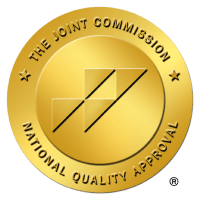Oregon Medicaid provides reimbursement for live video and audio under some circumstances. Store-and-forward and remote patient monitoring are not reimbursed.
Telemedicine in your state
Oregon Telehealth State Laws & Reimbursement Policies
Medicaid Telehealth Reimbursement
Summary
Definitions
“Telemedicine is the use of medical information, exchanged from one site to another, via telephonic or electronic communications, to improve a patient’s health status.”
Live Video
Policy
Oregon Medicaid will reimburse for live video when billed services comply with their billing requirements.
Eligible Services/Specialties
Live video services using audiovisual technology can be used in teledentistry.
Eligible Providers
No reference found.
Eligible Sites
No reference found.
Geographic Limits
No reference found.
Facility/Transmission Fee
The evaluating practitioner at the distant site may bill for the evaluation, but not for the transmission.
Store-and-Forward
Policy
Other forms of telecommunications, such as telephone calls, images transmitted via facsimile machines and electronic mail are services not covered under specific circumstances.
Eligible Services/Specialties
A dentist may collect the transmission of recorded health information such as radiographs, photographs, video, digital impressions, or photomicrographs transmitted through a secure electronic communication system.
Geographic Limits
No reference found.
Transmission Fee
No reference found.
Email/Phone/Fax
E-mail and telephone is reimbursed when used for patient consulting and “when billed services comply with the practice guidelines set forth by the Health Service Commission (HSC), applicable HSC approved CPT code requirements and are delivered consistent with the HSC practice guideline.”
Consent
Teledentistry: A patient receiving services through teledentistry shall be notified of the right to receive interactive communication with the distant dentist and shall receive an interactive communication with the distant dentist upon request. This must be reflected in the patient’s chart documentation.
Out of State Providers
An out-of-state provider using telemedicine services must be licensed to practice within the State of Oregon or within the contiguous area of Oregon and must be enrolled as a Health Systems Division provider.
Miscellaneous
The referring and evaluating practitioner must be licensed to practice medicine within the state of Oregon or within the contiguous area of Oregon and must be enrolled as a Division of Medical Assistance Programs (Division) provider.
Private Payer Laws
Definitions
Treatment of Diabetes: “Telemedical means delivered through a two-way electronic communication, including but not limited to video, audio, Voice over Internet Protocol or transmission of telemetry that allows a health professional to interact with a patient, a parent or guardian of a patient or another health professional on a patient’s behalf, who is at an originating site.”
Requirements
Health plans must provide coverage of a health service that is provided using synchronous two-way interactive video if the service would be covered when provided in-person, it is a medically necessary service, the service is determined to be safely and effectively provided using live video according to generally accepted health care practices and standards and the technology and application to provide the service meets all standards required by state and federal laws governing privacy and security of protected health information.
Parity
Oregon requires a health benefit plan to provide coverage of a health service that is provided using synchronous two-way interactive video conferencing under certain circumstances.
Professional Regulation/Health & Safety
Definitions
Health Care Provider Incentive Program: “Telehealth” means the provision of health services from a distance using electronic communications.
Consent
Community Treatment and Support Services: Individuals have a right to consent to services prior to the start of services, except in a medical emergency or as otherwise permitted by law.
Online Prescribing
No reference found.
Cross State Licensing
A physician granted a license to practice medicine across state lines has the same duties and responsibilities and is subject to the same penalties and sanctions as any other provider licensed in Oregon.
Miscellaneous
Oregon requires out-of-state physicians to acquire active tele-monitoring status through the Oregon Medical Board before they can perform intraoperative tele-monitoring on patients during surgery.
Source: Center for Connected Health Policy
https://www.cchpca.org
